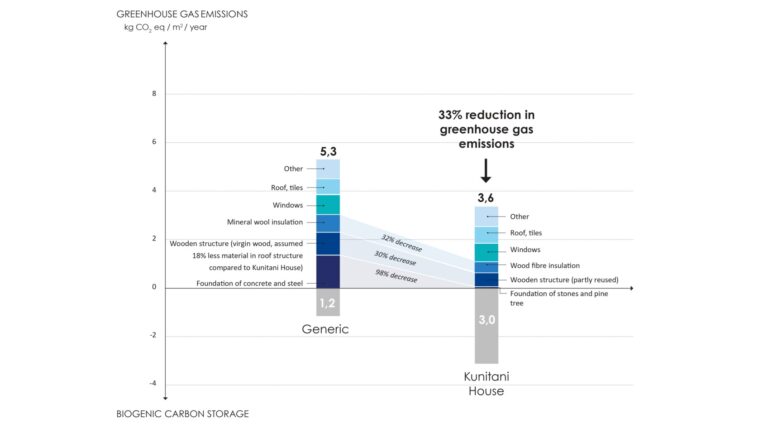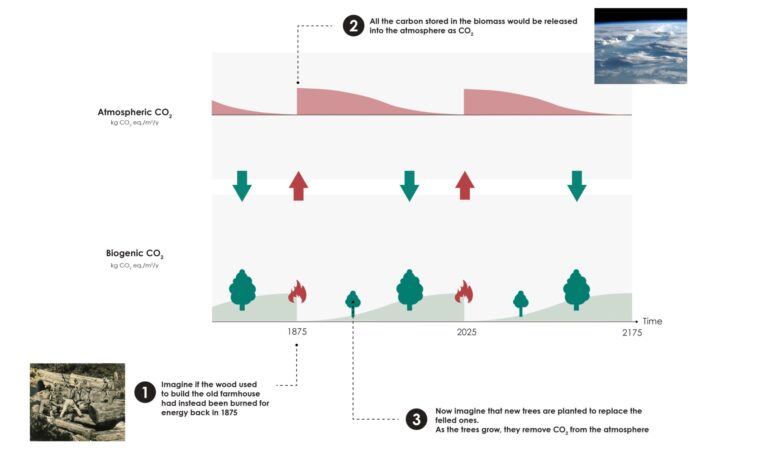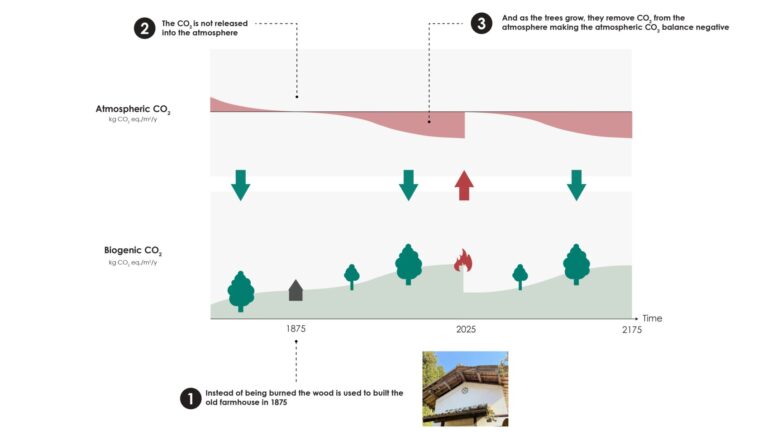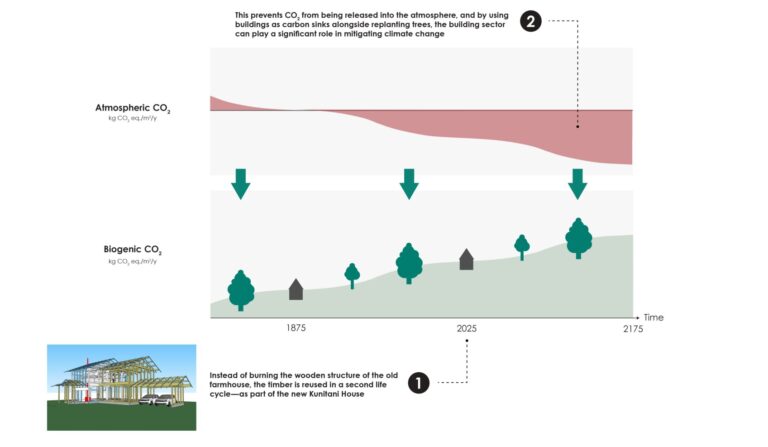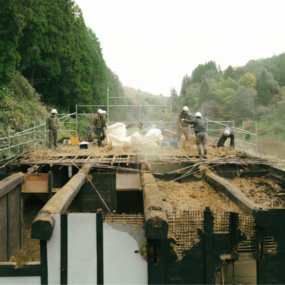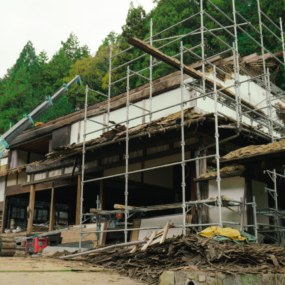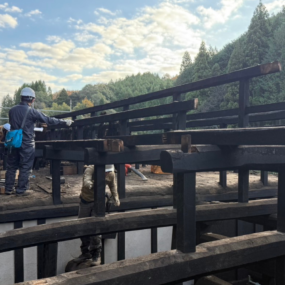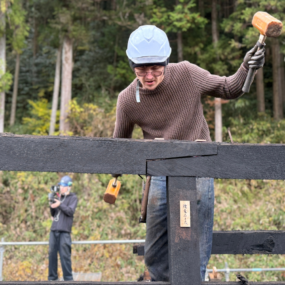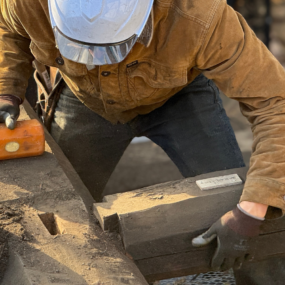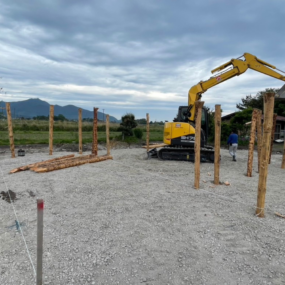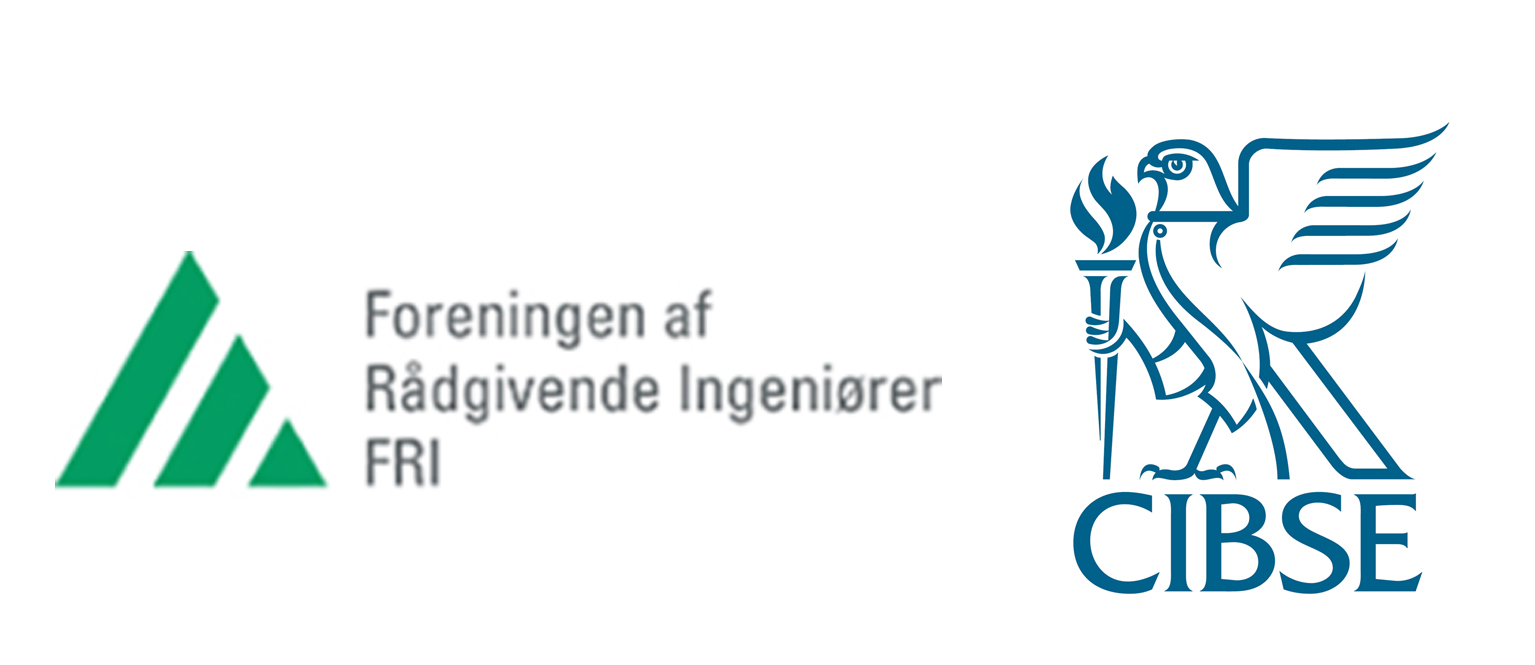We’re participating in Building Green 2025!
We’re participating in Building Green 2025!
Join us at Building Green 21st of August and hear how 150-year-old Japanese building techniques can help us build more sustainably today.
We’re excited to be part of Building Green once again, as the industry gathers in Copenhagen this August for two days of talks, debates, and knowledge-sharing — this year with a focus on bio-based building materials and how we can reduce the climate impact of construction in Denmark.
At henrik-innovation, our spotlight this year is on Design for Disassembly – explored through a Japanese lens, with a special theme: Reclaimed timber from traditional Japanese wooden structures.
- Figure 1: Embodied emissions
- Figure 2: Carbon cycle when burning biomass
- Figure 3: Carbon cycle when storing biomass
- Figure 4: Carbon cycle when storing biomass over multiple life cycles
Figure 1: Illustrates the embodied emissions of Kunitani House compared to a similar house with the same geometry, modeled using conventional construction methods and generic materials. The generic house is modeled with mineral wool insulation, virgin timber, and a standard concrete and steel point foundation. In contrast, Kunitani House features wood fibre insulation, a reused wooden structural frame, and a foundation made from stone and pine.
Figure 2-4: This image series illustrates the principles of carbon cycling, comparing the effects of burning biomass for energy with storing biomass in buildings across multiple life cycles— as demonstrated with the Kunitani House.
Our colleagues Helena and Maki will take the stage to guide you on a journey to Japan and the Japanese villages, where DfD principles have been embedded in buildings for more than 150 years – long before we even had a name for it.
- What can Denmark learn from centuries-old Japanese building techniques?
- How are bio-based building materials, recycling and circular economy treated in LCA, and what consequences does this have for the assessment?
Low-carbon lessons from high-craft heritage
In Denmark we’re once again building in timber – constructions that, like the old timber-framed houses, can last for centuries.
Japan also has a strong tradition of wooden construction. Over 150 years ago, Japanese builders were already incorporating Design for Disassembly principles, an approach that’s proving invaluable today, as large volumes of reclaimed timber can now be harvested from old buildings.
- Kunitani House project, Japan
At henrik-innovation ApS we work to give these materials and structures new life.
We ask our self how we can learn from Japanese DfD projects, and how can we implement that knowledge in today’s Danish timber constructions?
Don’t miss the presentation by Helena Maria Hammershaimb (LCA specialist) and Tomonori Makita (Senior energy & indoor climate consultant):
Thursday August 21, PM 14:45–15:20,
Charlottehaven
Hjørringgade 12C,
2100 Copenhagen Ø
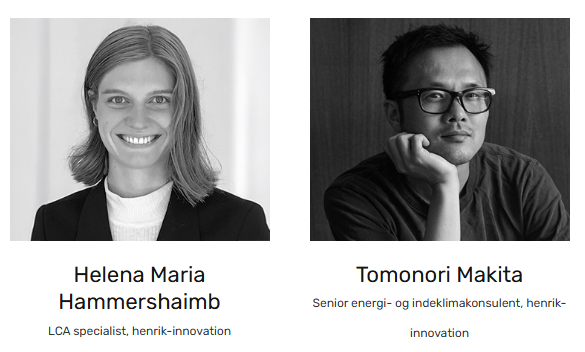
Read more about the Kunitani House-project here
- Post Categories
- Latest news

